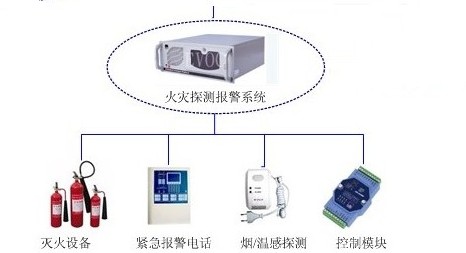Today, We simply introduces you to the electronic temperature-sensing fire detector device in the fire automatic alarm system that is common in our lives, and the application of the thermistor temperature sensor technology.
A schematic diagram of the structure of a certain type of fire monitoring and alarm system, and a temperature detector device in the system. Data map
First, as a common fire control system for all kinds of modern large-scale places, the automatic fire alarm system can convert the physical signals such as smoke and heat generated by the initial combustion of fire into electrical signals through fire detectors and transmit them to fire alarm control. Devices that enable people to take timely fire prevention measures.
Among them, as an instrument dedicated to detecting fires, fire detectors play a significant role. It can change the smoke and high temperature flare in the fire stage to the electric signal alarm through the detector or activate the automatic fire extinguishing system to extinguish the fire in time.
Common electronic temperature-sensing fire detectors, data sheets
In daily life, there are many types of common fire detectors, including ionized smoke detectors, photo-electric smoke detectors, temperature detectors, gas detectors, and infrared sensors.
Detectors, etc. Among them, the temperature detector can be divided into three types: bimetal type, bellows type, and thermal electronic component type according to the principle structure. The electronic temperature detector is a temperature sensor that uses a thermistor as a thermal electronic component. It consists of two thermistors and electronic switching lines with the same resistance and temperature characteristics. As a type of temperature sensor device whose resistance value is extremely sensitive to temperature, one of the two thermistors can directly sense the change of the ambient temperature, and the other is enclosed in a small ball of a certain heat capacity.
When the external temperature changes slowly, the resistance values of the two thermistors will be close to each other with temperature changes, and the switching circuit will not operate. When the fire occurs, the ambient temperature rises sharply, the resistance values of the two thermistors change differently, the original steady state is destroyed, the switch circuit is opened, and an alarm signal is issued.























